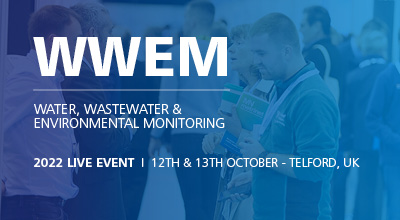| Paper Title: | The Evolution of Real Time Control (RTC) systems for the Application to Wastewater Treatment Processes |
| Paper Topic: | Modelling & Control (Wastewater Systems) |
| Presenter Name: | Mr Andrew Thornton |
| Company/Organisation: | Hach Lange UK |
Paper Information :
In recent years the wastewater industry has been exposed to rapidly increasing costs in energy and chemicals along with stringent effluent consent restrictions which will only tighten in the future. In addition to this is the pressure to operate in a much more sustainable way has become an important driver for most municipalities in the developed World. This results in a tension between implementing new solutions to meet the designated discharge limits, whilst also reducing the capital and operational carbon footprint. New technologies for driving effluents to low compliance can be energy intensive, chemically intensive or both and the provision of new process assets also has a significant impact on carbon footprint. The development and implementation of innovative processes will go some way towards resolving this dilemma; however, without significant investment and capital outlay, it is difficult to foresee a short term resolution. Over the decades to come, it is envisaged that much more sustainable capital projects will be implemented to counteract these issues. Still, the short term goal must be to find innovative ways of utilising existing infrastructure more efficiently to meet the new drivers.
In the UK, commercial power costs have increased from 7p/kWh to 9/kWh within a year and future power cost inflation is expected to be at least 11% per annum excluding any climate change levies (Sunner et al 2012). The water industry is a major commercial power consumer and many sites in the UK have gone from low energy and simple percolating filter works to energy intensive activated sludge processes (ASP), driven by tighter carbonaceous and ammonium discharge standards and new and tightened standards for Total Nitrogen (Sunner et al 2012). Initial trials were conducted at a 250,000 population equivalent ASP on the south coast of the UK which demonstrated that the implementation of RTC for aeration could reduce power consumption by 20 % when compared to standard operation protocols (Figure 1). Conventional control methods for blower systems focus on maintaining a fixed DO concentration (setpoint) within the reactor to ensure that there is enough DO present to facilitate the nitrification process (Lindberg and Carlsson, 1996) under all conditions. RTC modulates the DO concentration with the use of complex algorithms, derived from ASM 1 (Henze et al, 1987) and in situ instrumentation (Figure 1) to determine the ideal DO concentration for any given load, whilst still meeting compliance (Sunner et al 2012). Furthermore, it was also demonstrated that RTC could effectively reduce the requirement for supplemental carbon addition by 50 %.
Since then the focus of wastewater RTC systems has broadened from aeration to encompass additional process elements which have been targeted for automation. These include, polymer dosing control for sludge thickening and dewatering processes, metal dosing control for P removal, sludge feed control for digesters, sludge age control (SAS wasting) and intermittent aeration control for effective use of carbon and alkalinity recovery.
The initial driver for the development of RTC was to provide efficient power and chemical consumption in wastewater operations but throughout the development, other potentially more important benefits have come to light.
Measuring wastewater constituents in real time and providing automation systems to act accordingly does provide a level of process robustness. Admittedly, under normal operating conditions, RTC systems are configured to operate in the most efficient manner to meet treatment goals. However, compliance is always the overriding function and in periods of abnormal load the control systems respond to ensure that discharge limits are not breached, irrespective of the energy usage. Similar can also be said for RTC systems for chemical dosing. Furthermore, has also been possible to demonstrate that the main benefit of controlling polymer dosing is either improved digester gas yield or reduced cake transport costs, or both as well as process stability.
In addition, the implementation of advanced process control can also significantly offset the requirement for capital expenditure related to the provision of new civil assets. It has been proved possible in a number of cases, to avoid completely, the building of new civil structures to meet new compliance drivers or to accommodate catchment growth by providing advanced control solutions at a fraction of the cost.
Something which must always be considered when implementing RTC systems is asset condition, which is the single most important factor when attempting to improve process performance with advanced control. Poor assets are more difficult to enhance and it is sometimes impossible for advanced control to make any significant difference. RTC always works best on well maintained and well operated plants and post installation it is of paramount importance that the instrumentation put in place for the application of control is maintained and available, otherwise the plant will return to being operated in the much the way as it was before.
RTC has recently been more widely adopted for wastewater treatment and for some municipalities it has become business as usual. However, this is still not the norm and there are many future opportunities for implementation and further development.
This paper intends to illustrate the development of RTC systems from the first full scale implementation through its development to the current position in the industry by using real case studies to demonstrate its effectiveness. It will also investigate the potential for future developments and explore reasons why the solutions are not more widely adopted.


